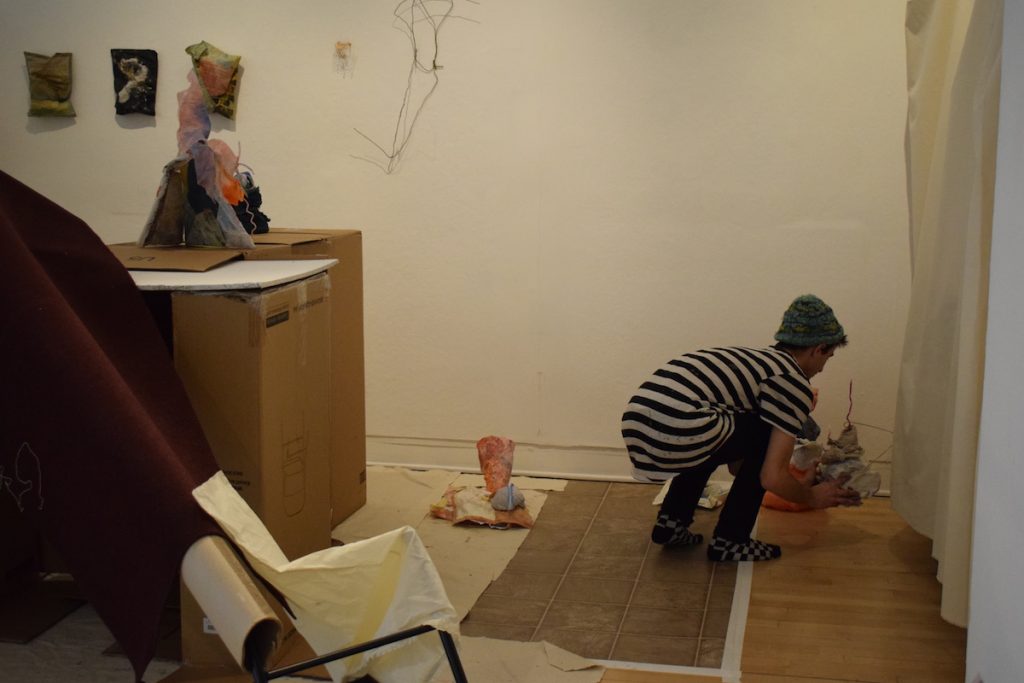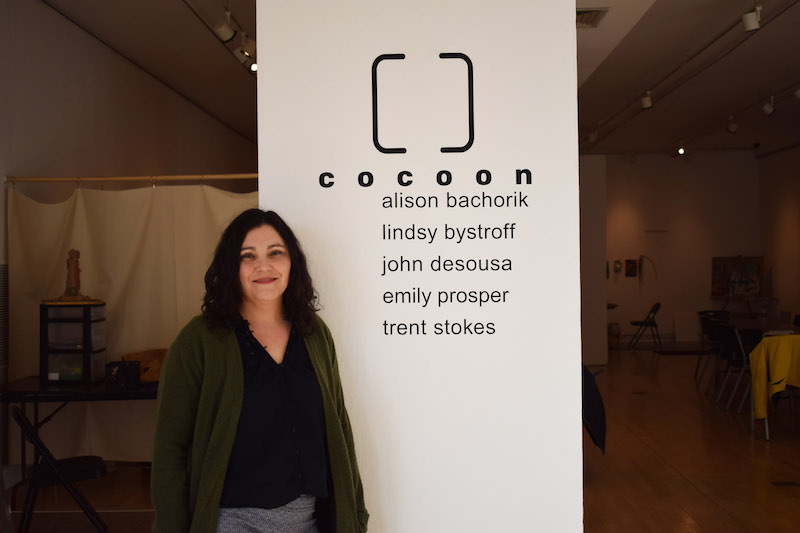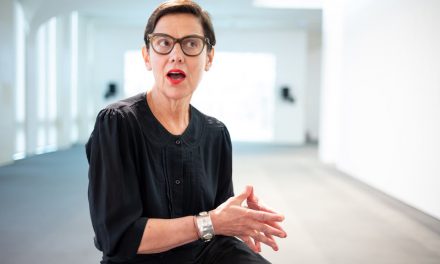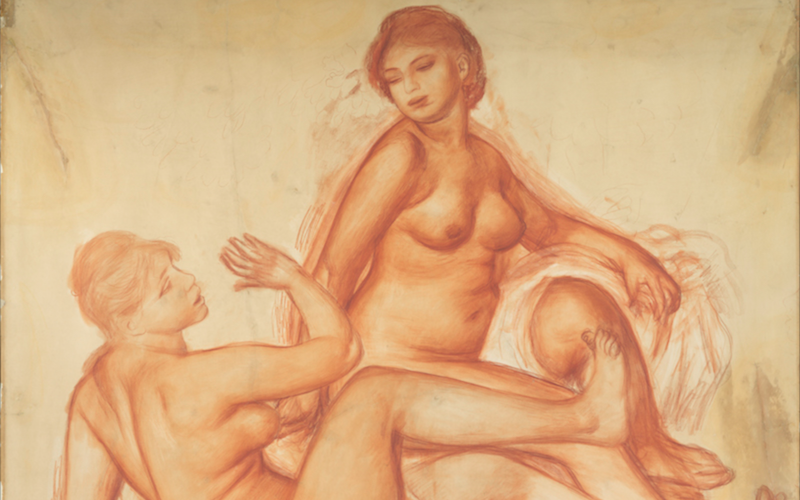Photos: Katie Cusack
Belinda Colón is busy. As full-time curator at The Arts Center of the Capital Region, she has been hard at work bringing a series of exhibits to the Main Gallery of the Troy arts venue that immerse audiences in tangible ways that have helped spark dialogue and interest in the arts from even the most hesitant of visitors.
In addition to her role at the Arts Center, Colón is also director of Spring Street Gallery in Saratoga Springs, where she is a member of the city’s Arts Commission as well as the president/executive director of On Deck Saratoga, working with the local community to raise funds and awareness of the skate community. Colón is also a board member of Salem Art Works.
While she says curating at the Arts Center is her top role and priority, her positions around the Capital Region and beyond allow her to connect with artists, learn about and share opportunities as well as cross-promote artists and their works.
Colón also operates a site called The Art Sheet, which shares grant, exhibition and residency openings for artists in the area. “It’s not a regional situation. It’s everyone’s situation,” she says of the difficulty artists have finding opportunities that can help them thrive.
“My goal is to really connect what’s going on in this region with everyone,” she says. “And not just Troy artists, I want it to be all the artists within the surrounding region—I have artists from Hudson, from Greene County, Saratoga, Western New York. When I first came, it was really focusing on the gallery and getting it to a point where it was bringing people in, which I want to continue to do. Now it’s about creating opportunities outside and inside the Art Center, making sure that the resources are productive on all ends.”
At the Arts Center, she has had the chance to have a hand in large-scale public arts projects in the city of Troy, such as the upcoming Franklin Alley mural, which she hopes the public and artist community see as a benefit to the local arts scene despite their choice of New York City-based artist Joe Iurato.
“We wanted to make sure it had an impact. We wanted to make it something that was recognizable nationally, so people will come to our city,” she says. “But I don’t want the artists to think that we wouldn’t want them here. With a project like this, we can connect with organizations in different areas and say, ’We did this here and we have this artist we think would be great for you over there.’ We would love for our artists to have opportunities in different cities. That’s a big part of growth.”
In order to continue creating these opportunities as a curator, she’s not afraid to take chances. She makes sure posters for new exhibits go up around the city for those who don’t have computer access and keeps an eye out for artists who don’t have art school experience or who have never shown work.
“Initially, it was a bit challenging because I was taking over for someone else and had to find my own vision,” Colón says. “And when I first got here, we were only doing group shows. I realized that it needs to be more immersive. In order to get people to understand art, they need to feel comfortable with art.”
After an exhibit cancellation in November 2018, shortly after Colón’s arrival, she got the first opportunity to harness her vision and use the space of ACCR in a new way. She had already done a few solo shows in the main gallery that didn’t quite pick up, so she used the time to reach out to her On Deck Saratoga contacts and other artists to take part in a community-driven exhibit that not only featured artwork, but a functional ramp for local skaters to use throughout the winter.
January 2019’s multidisciplinary celebration of skate culture “In Ply,” was a hugely successful multimedia group show that she says started it all.
“It was another group show, but it was that whole idea of immersing the public in the artwork and having them relate to the actual skate ramp, or musically, having Super Dark come in doing performances at night,” she explains. “My focus has been really about connecting the community to the art, making them feel comfortable coming in and then learning. Maybe they start taking a class or starting to paint at home or just seeing artwork as more than just something they can’t touch—and not in the sense of actually physically touching, but understanding.”
“A lot of museums are becoming more immersive because of that reason,” she adds. “You need to gain people’s attention.”
One of the Arts Center’s more recent Main Gallery shows, “The Huelitic Code” by Michelle Bowen, illustrates that goal. Bowen’s work, using color to represent the letters of the alphabet, introduced new arts enthusiasts to an accessible form of abstract art and allowed them to interact directly with the pieces, using a key card to “decode” each piece.

Colón is currently running “Cocoon,” a new curated residency experiment for five regional artists exhibited in the Main Gallery, on display through April 19. Graphic artist Alison Bachorik, painter Lindsy Bystroff, multimedia visual artist John Desousa, visual artist Emily Prosper and graphic artist Trent Stokes have been designated a set amount of space in the Main Gallery to work, as well as full access to the print, painting, woodworking and other studio spaces of the Arts Center.
“These are artists who don’t have studio space, which is another issue we have in the region and everywhere really, because it’s so expensive,” Colón says. “So this is another way that I can provide a resource within the Art Center to let people know what it looks like to actually be a working artist—how a studio is run and what kind of space they need. And just to connect the fact that these are everyday people either do this for a living or do this on the side, but either way, have a passion for something that they need a space for.”


During February’s Troy Night Out, Colón set specific hours for the public to visit each space and ask questions or hold conversations with the artists. At the end of their “residency,” during Collar City Craft April 24-26, the artists will present their work to the community.
“My goal with these shows has been to make a better relationship between the artists who are coming in and artists who are showing their work,” she says. “Having more people come through the door and understanding what I’m doing in this gallery is really important.”
Colón’s goal for future exhibits is to expand the capability and medium of the space. She would love to curate a virtual reality and/or augmented reality exhibit, or to focus more on electronic media.
“I would love to be able to close off these windows and just have these experiences where people can come in here and lay down on a giant cushion and paint the sky or do something that would be a little more out of their comfort zone,” she says.
The Arts Center’s education mission motivated Colón’s decision to work full time as a curator.
While artists and community members are free to choose from a range of art-making classes to learn new skills or hone in on their craft, artists who are showing work in the space, wish to do so, or simply want to develop their professional portfolio have valuable resources at the Arts Center as well.
The Artist Initiative, a redesigned program formerly known as The Business of Art, invites artists to learn about the business of arts administration, including copyright laws, how to organize and share their portfolios and more through a series of classes. The Critical Forum, which Colón operates, is open to the public. The forum features a panel of arts administrators and Colón choosing 10 artists for one-on-one critiques of their portfolios.
One of the biggest challenges artists face comes down to money. That’s something Colón tries to stay assist with, attempting to maximize the experiences she can provide artists showing work in the galleries or seeking opportunities.
“We are very good about making sure that we’re clear about what we’re doing here—how we do it and what resources we present to artists. We do whatever we can do to get sponsors or small grants wherever we can. I just wish that more people would buy the work,” she says.

It’s a roadblock she faces as a curator.
“Budgets are challenging,” she says. “There’s not a lot of money in the arts, but we’re trying to push more money into the arts to let people know that it really is a therapeutic and emotionally positive thing to be involved in.”
Regardless of the challenges, Colón sees a bright future for the regional arts scene, particularly if major institutions continue to collaborate.
“There are a lot of new opportunities coming up in the public realm,” she notes. “If you think about all of what Albany Center Gallery is doing, or seeing Albany Barn expand into Schenectady, those things can just expand further. Glens Falls has a great community of artists and with the associate director from Saratoga Arts going up to the Lake George Arts Project, artists from the Saratoga and regional communities have even more opportunities up north.”
“It’s one step at a time,” Colón continues. “You take care of what you have, you appreciate the resources that you have here and just create whatever opportunities you can around it.”






Trackbacks/Pingbacks